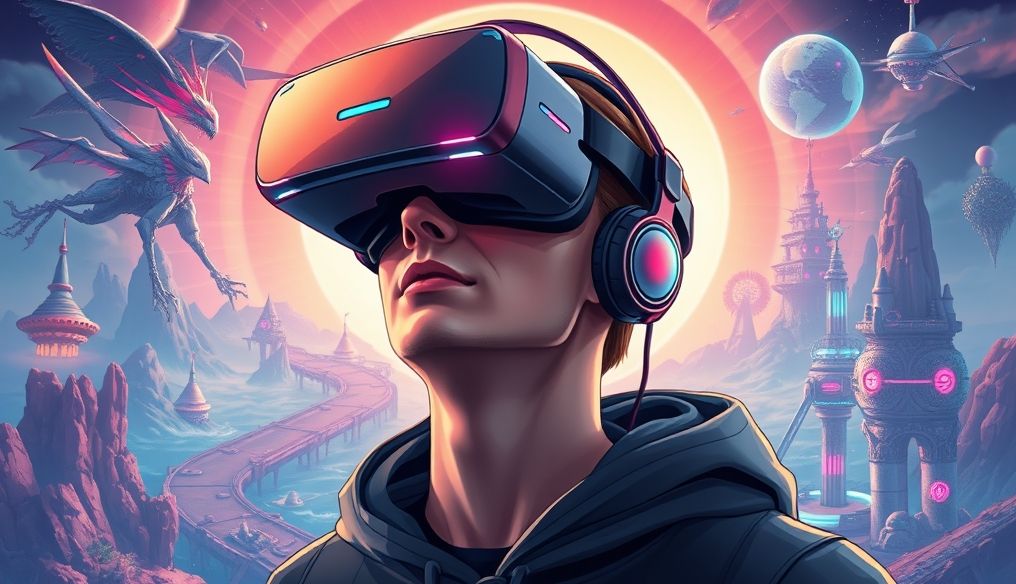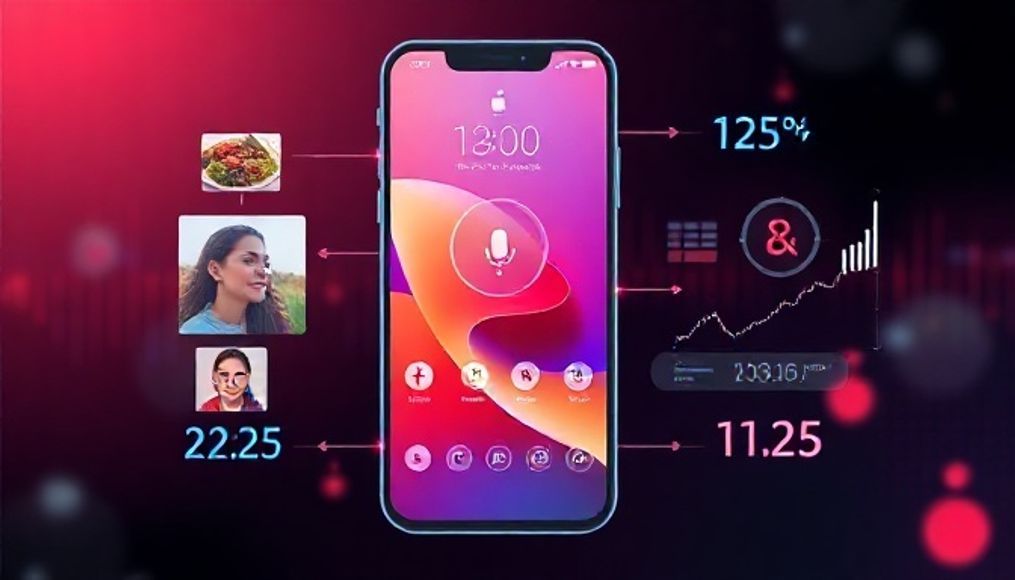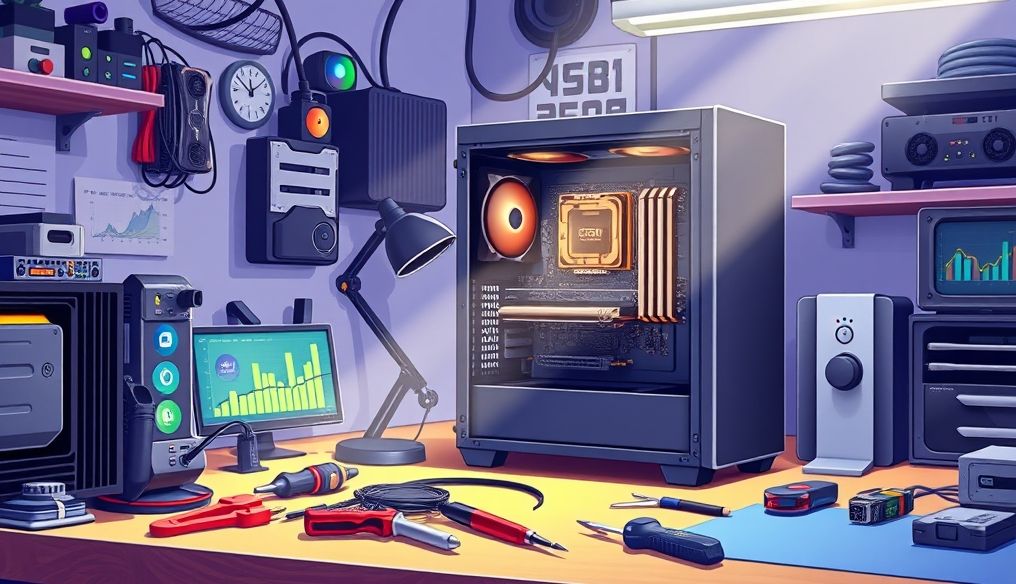Are Virtual Reality (VR) Headsets the Future of Gaming?
Since their emergence, Virtual Reality (VR) headsets have generated significant excitement in the gaming world. They promise an immersive and unprecedented experience, but are they truly the future of gaming or just a promising technology that hasn't lived up to expectations? This article explores the possibilities and challenges facing this technology and attempts to answer this pivotal question.
1. What is Virtual Reality (VR) and How Does it Work?
Virtual Reality (VR) is a technology that creates an interactive three-dimensional environment that users can explore and interact with using special headsets. These headsets display separate images for each eye, creating a sense of depth and realism. In addition, the headsets include sensors to track head movement, allowing users to look around the virtual environment naturally. Some VR systems also include handheld controllers that allow users to interact with the virtual environment in more detail.
2. The Immense Possibilities VR Headsets Offer in Gaming
VR headsets enable unique gaming experiences that cannot be achieved using traditional screens. These possibilities include:
- Complete Immersion: The player feels like part of the game, increasing excitement and suspense.
- Natural Interaction: The player can interact with the virtual environment using their natural body movements.
- New and Innovative Experiences: VR opens the door to new types of games and experiences that were not possible before, such as realistic simulation games and horror games that rely on psychological tension.
3. Examples of Successful Virtual Reality Games
There are many virtual reality games that have achieved great success, demonstrating the potential of this technology. Some notable examples include:
- Beat Saber: A rhythm game that requires the player to cut blocks with lightsabers.
- Half-Life: Alyx: An adventure and action game set in the Half-Life universe, considered one of the best VR games of all time.
- Resident Evil 7: Biohazard (VR Mode): An incredibly realistic and terrifying horror experience.
- Superhot VR: A unique shooter game where time only moves when the player moves.
4. Challenges Facing the Widespread Adoption of VR Headsets in Gaming
Despite the immense possibilities, VR headsets face many challenges that hinder their widespread adoption:
- High Cost: High-quality VR headsets are still expensive, making them inaccessible to many.
- Performance Requirements: VR games require powerful computers to run smoothly, increasing the overall cost.
- Motion Sickness: Some users experience motion sickness when using VR headsets for extended periods.
- Limited Content: The number of VR games available is still limited compared to traditional PC and console games.
- Comfort: Some headsets are uncomfortable to use for long periods.
5. The Impact of Health and Fitness on the VR Experience
Some VR games are characterized by their high physical interaction, making them a fun way to exercise. Games like Beat Saber and BoxVR require the player to move actively, helping to burn calories and improve fitness. However, it is important to pay attention to motion sickness and avoid overplaying to prevent injuries.
6. Future Technological Advancements in VR Headsets
The field of virtual reality is witnessing continuous technological advancements, promising a bright future. These advancements include:
- Improved Screen Resolution: Increasing the screen resolution will make images clearer and more realistic.
- Reduced Weight and Size: Designing lighter and smaller headsets will make them more comfortable to use.
- Improved Motion Tracking: More accurate motion tracking will make interaction with the virtual environment more natural and smooth.
- Developing New Mixed Reality (MR) Technologies: Integrating virtual reality with real reality will open the door to new and innovative experiences.
- Focus on Haptics: Allowing the user to feel objects in the virtual world will add a new dimension of realism.
7. VR Headsets in Fields Other Than Gaming
VR applications are not limited to gaming only. This technology can be used in many other fields, including:
- Training and Simulation: Training pilots, surgeons, and soldiers in realistic virtual environments.
- Education: Exploring historical sites and cultural landmarks in interactive virtual environments.
- Psychotherapy: Treating phobias, anxiety, and post-traumatic stress disorder.
- Architecture and Design: Visualizing buildings and interior designs before they are built.
- Tourism: Visiting famous tourist destinations around the world from the comfort of your home.
8. The Future of Gaming: Will VR Headsets Become Mainstream?
It is difficult to predict the future of gaming accurately, but it is clear that VR headsets have the potential to change the way we play games. If companies can overcome the current challenges, such as high cost and motion sickness, it is possible that VR headsets will become mainstream in the future. However, VR headsets are likely to coexist with traditional screens and controllers for a long time, as both offer unique gaming experiences.
Virtual reality is not just a technology, it's a new way to express creativity and interact with the world.
Ultimately, the future of VR headsets in gaming depends on the ability of companies to develop new and innovative technologies, create engaging and enjoyable gaming experiences, and lower the cost to be accessible to everyone. If they can achieve this, we may witness a real revolution in the gaming world.




